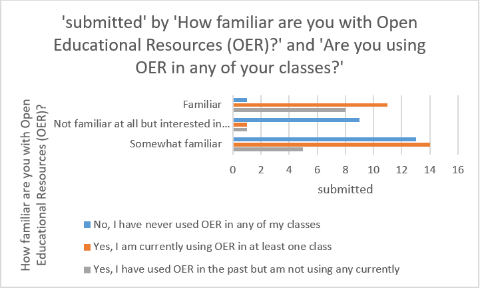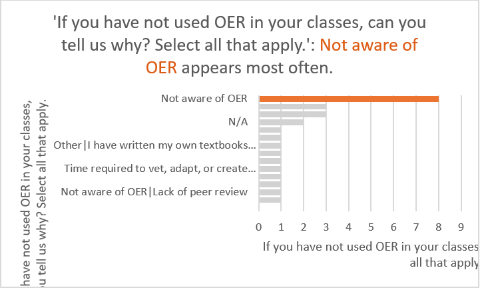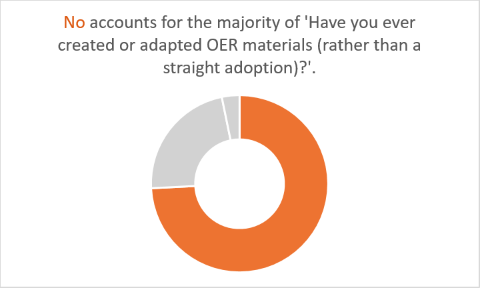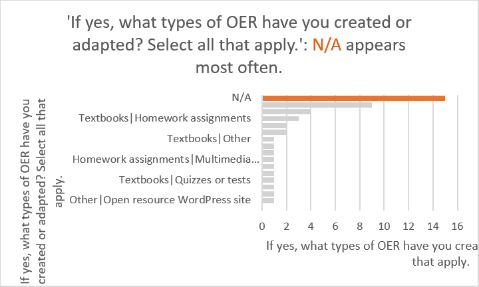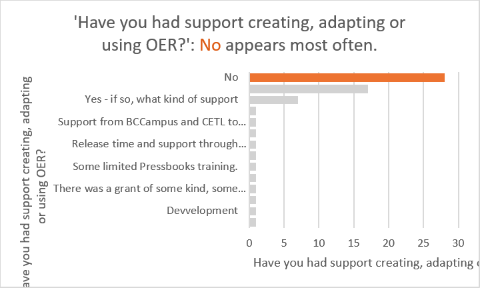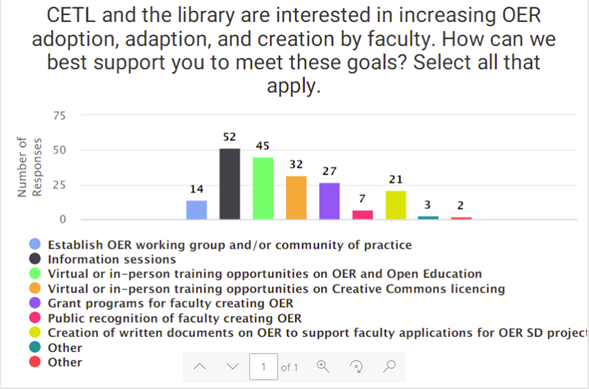As you have read about here before, in 2019, Camosun College (via a proposal by Sybil Harrison, Director of the Library and Learning Services, and Nannette Plant, from Special Projects, Continuing Education and Contract Training) received an Open Education Sustainability Grant from BCcampus, and in turn funded eight projects to develop or redevelop courses using Open Educational resources. The project brought together 11 faculty members, as well as librarians, copyright experts, instructional designers, curriculum developers, indigenization specialists, graphic designers, multimedia support staff, and others to work on the projects. Not surprisingly, unexpected events pushed the completion deadlines for these projects to the end of April this year (2022), but despite all the challenges our faculty grant recipients faced moving their regular teaching online during COVID, they still found time to dedicate time to redesigning their courses by adapting and creating a wide range of Open Educational resources (OER) – everything from websites, to open textbooks, to online open homework/test banks – to support their students.
Now that the project has been “completed” (in so far as the final report has been submitted and some of our grant recipients have reflected on their open projects in this year’s Camosun Showcase publication,) I wanted to take a few moments here to reflect on my own journey over the past almost 3 years.
First, let me express my immense gratitude to the people involved with this project. To my Director who invited me in as project manager and supported me throughout. To the faculty who engaged fully in this work despite overwhelming challenges they were already dealing with. To my colleagues in eLearning and CETL who supported me and this project while they also navigated a world where everyone suddenly needed their help. To the librarians, our copyright officer, graphics designers, students, and all the others who supported in so many ways. And of course, to BCcampus for awarding us the initial funding and to our college for contributing matching funds. I want to make clear that the rest of this piece is in no way meant to negate or ignore these amazing contributions to Open Education at Camosun College.
But now, I must acknowledge that I struggled with writing this reflection. I wondered, is it because it’s not just about me? Am I having trouble separating my journey from that of the whole group? That would be an easy (and good) answer. And that’s partly it. But the other part comes from the me that asks: “What now?” This project has given me purpose, hope, and the sense that I am doing something useful, not only for the project folks but also for the institution more widely, and I don’t want to lose that. But I can’t do it alone, even if my workload was solely dedicated to Open Education. This project has made me realize how important Open Education is. I mean, I understood that in theory before, through extensive reading, and from listening to provincial groups and colleagues engaged in Open Education work, but I hadn’t added it to my plate. Well, it’s there now – no taking it back.
While we made it successfully to the end, this project was not without its challenges. One big one was, of course, COVID which exacerbated any and all issues that are typical in a large project like this. But the more encompassing challenge was (and is) that there is no one person at Camosun who is fully assigned and dedicated to working with Open Education. Our librarians, of course, engage in Open Education work, and my understanding is that there is one librarian who has Open Education as part of her workload. Additionally, my Director (and sponsor for this project) is a huge champion of Open, and some of the faculty in the project had worked with Open Educational resources in the past. But Open Education inevitably becomes off-the-side-of-the-desk work when you have innumerable competing priorities of supporting students, faculty, and entire units of employees who were all just trying to keep from drowning during and after the “Great Pivot” to online that was imposed by the pandemic.
One of my main responsibilities as the Open Sustainability project manager was keeping the project on track when everyone was so busy – and to be honest, at times it felt like I was all alone in that struggle (and yes, I mean struggle). I know that’s not a completely fair assessment as people were working hard to keep not only their projects, but their regular work going the best they could under difficult circumstances, but I’m one of those people that needs to hear something back when I send an email. Anything. A note to say “thanks – I’m busy but I’ll get back to you soon” so there were times I wanted to just give up and let the project die.
I’ll pause for a moment here as I know maybe people wanted this reflection to be a rah-rah of excitement and patting ourselves on the back for our accomplishments. Don’t get me wrong; we did some amazing things. But, well, nothing in life is rah-rah all the time, and if we don’t acknowledge the sticking points, the pain, the struggles, we can never learn how to do better next time. So, here are some of my take-aways at this moment in time (who knows what they might be in 6 months or a year…)
- We need to listen to students more. Do your students buy their textbook(s)? How much of it are they reading? Are they able to keep the textbook and use it for future reference? Do they have to make choices around buying texts or eating? Are we truly engaging in equity, diversity, inclusion, indigenization if we are using resources that don’t include diverse voices and perspectives? Do our students see themselves in our courses?
- Program/Department groups need to have conversations about how they are serving students and supporting their faculty to support students. Some faculty, especially term faculty, feel they can’t take the leap into OER because other faculty teaching the same course, or courses that ladder from the ones below, won’t support the addition or creation of new resources. CETL can help you think through how to incorporate OER into your program and courses – so include us in your conversations!
- The college needs to do better by its faculty and its students. Developing OER, especially a complete open textbook, much like developing a good online course, takes TIME! It cannot be done off the sides of desks or only during a Scheduled Development (SD) period, even if that SD time is 100% dedicated to it. Release time, grant opportunities, collaborative development are all models that have been used successfully at other institutions. Let’s take a closer look at what others have done.
- And finally, we (faculty, instructional designers, librarians, etc.) need to have more support from the college so we can dedicate time to this work. It shouldn’t rest with only one librarian or one instructional designer – someone needs to be coordinating Open Education work at the college, and this is NOT a part time job. We learned in this project (no surprise!) that it’s not only librarians and instructional designers who know stuff about open, but so does the Copyright officer, faculty (who are already using OER with little to no support), students (who when they hear about OER want to ask for more but don’t know where to go), and so many others (think the Centre for Accessible Learning, the Writing Centre, Graphics Design, the list goes on and on.) But who brings them together? Who brings in the right people for the right task at the right time? Who brings faculty together to talk about how they can engage in Open Education? Who brings in students to talk about their experiences and to talk to them about open textbooks? Who brings in admin to show them the benefits to students, faculty, and the college as a whole? Who advocates and coordinates larger advocacy?
I think that brings me to the bottom of my tank for right now. I hope we can keep this project and our work in Open Education alive and well and moving forward at our institution because if you don’t think Open Education is the way of the future in post-secondary education, then you aren’t paying attention.
For a little bit of rah-rah to end, here is a list of posts I have written as part of this project.
- Camosun College Open Sustainability Project Introduction
- Brian Coey’s Story
- Michelle Clement’s Story
- Stephanie Ingraham’s Story
- Peggy Hunter’s Story
- Pooja Gupta’s Story
- Sandra Carr’s Story
- Liz Morch’s Story
- Outcomes/takeaways and recommendations from the Open Education Conversation Café and survey
- The Open Education Conference 2021 recording for the presentation about this project is available at https://opened21.sched.com/event/moKr/building-capacity-for-open-education-at-a-canadian-community-college

